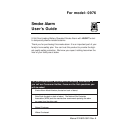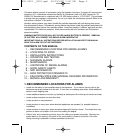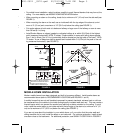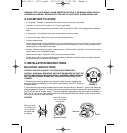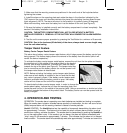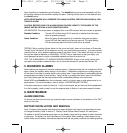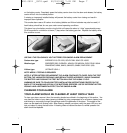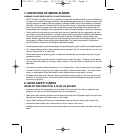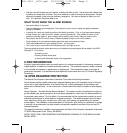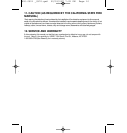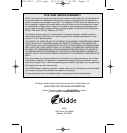
This alarm detects products of combustion using the ionization technique. It contains 0.9 microcurie of
Americium 241, a radioactive material (see Section 9). Distributed under U.S. NRC License No. 32-
23858-01E. Manufactured in compliance with U.S. NRC safety criteria in 10 CFR 32.27. The purchaser
is exempt from any regulatory requirements. Do not try to repair the smoke alarm yourself. Refer to the
instructions in Section 12 for service.
Ionization sensing alarms may detect invisible fire particles (associated with fast flaming fires) sooner
than photoelectric alarms. Photoelectric sensing alarms may detect visible fire particles (associated with
slow smoldering fires) sooner than ionization alarms. Home fires develop in different ways and are often
unpredictable. For maximum protection, Kidde recommends that both Ionization and Photoelectric
alarms be installed.
WARNING! BATTERY DOOR WILL NOT CLOSE UNLESS BATTERY IS PRESENT. REMOVAL
OF BATTERY WILL RENDER THE SMOKE ALARM INOPERATIVE.
IMPORTANT! READ ALL INSTRUCTIONS BEFORE INSTALLATION AND KEEP THIS MANUAL
NEAR THE ALARM FOR FUTURE REFERENCE.
CONTENTS OF THIS MANUAL
1 -- RECOMMENDED LOCATIONS FOR SMOKE ALARMS
2 -- LOCATIONS TO AVOID
3 -- INSTALLATION INSTRUCTIONS
4 -- OPERATION AND TESTING
5 -- NUISANCE ALARMS
6 -- MAINTENANCE
7 -- LIMITATIONS OF SMOKE ALARMS
8 -- GOOD SAFETY HABITS
9 -- NRC INFORMATION
10 -- NFPA PROTECTION STANDARD 72
11 -- CALIFORNIA STATE FIRE MARSHAL REQUIRED INFORMATION
12 -- SERVICE AND WARRANTY
1.RECOMMENDED LOCATIONS FOR ALARMS
• Locate the first alarm in the immediate area of the bedrooms. Try to monitor the exit path as the
bedrooms are usually farthest from the exit. If more than one sleeping area exists, locate additional
alarms in each sleeping area.
• Locate additional alarms to monitor any stairway as stairways act like chimneys for smoke and heat.
• Locate at least one alarm on every floor level.
• Locate an alarm in every bedroom.
• Locate an alarm in every room where electrical appliances are operated (i.e. portable heaters or
humidifiers).
• Locate an alarm in every room where someone sleeps with the door closed. The closed door may
prevent an alarm not located in that room from waking the sleeper.
• Smoke, heat, and combustion products rise to the ceiling and spread horizontally. Mounting the
smoke alarm on the ceiling in the center of the room places it closest to all points in the room.
Ceiling mounting is preferred in ordinary residential construction.
820-0921 _0976.qxd 02/03/05 7:02 PM Page 2



